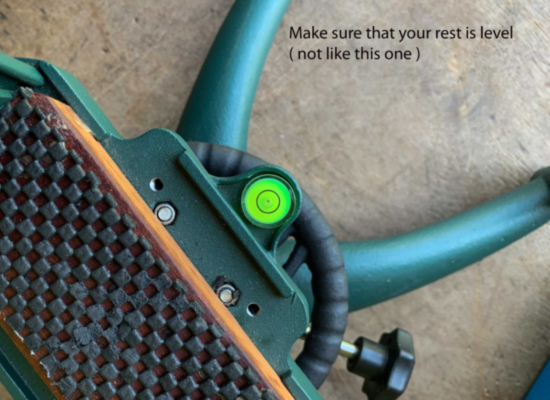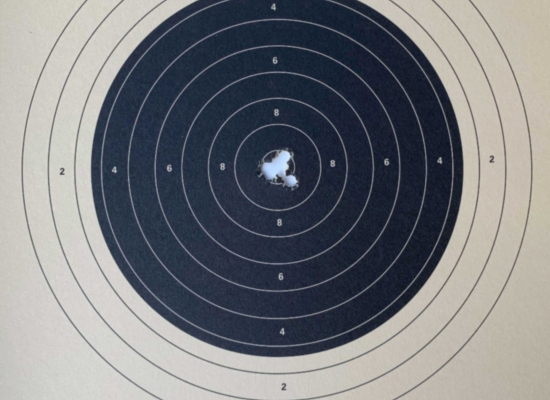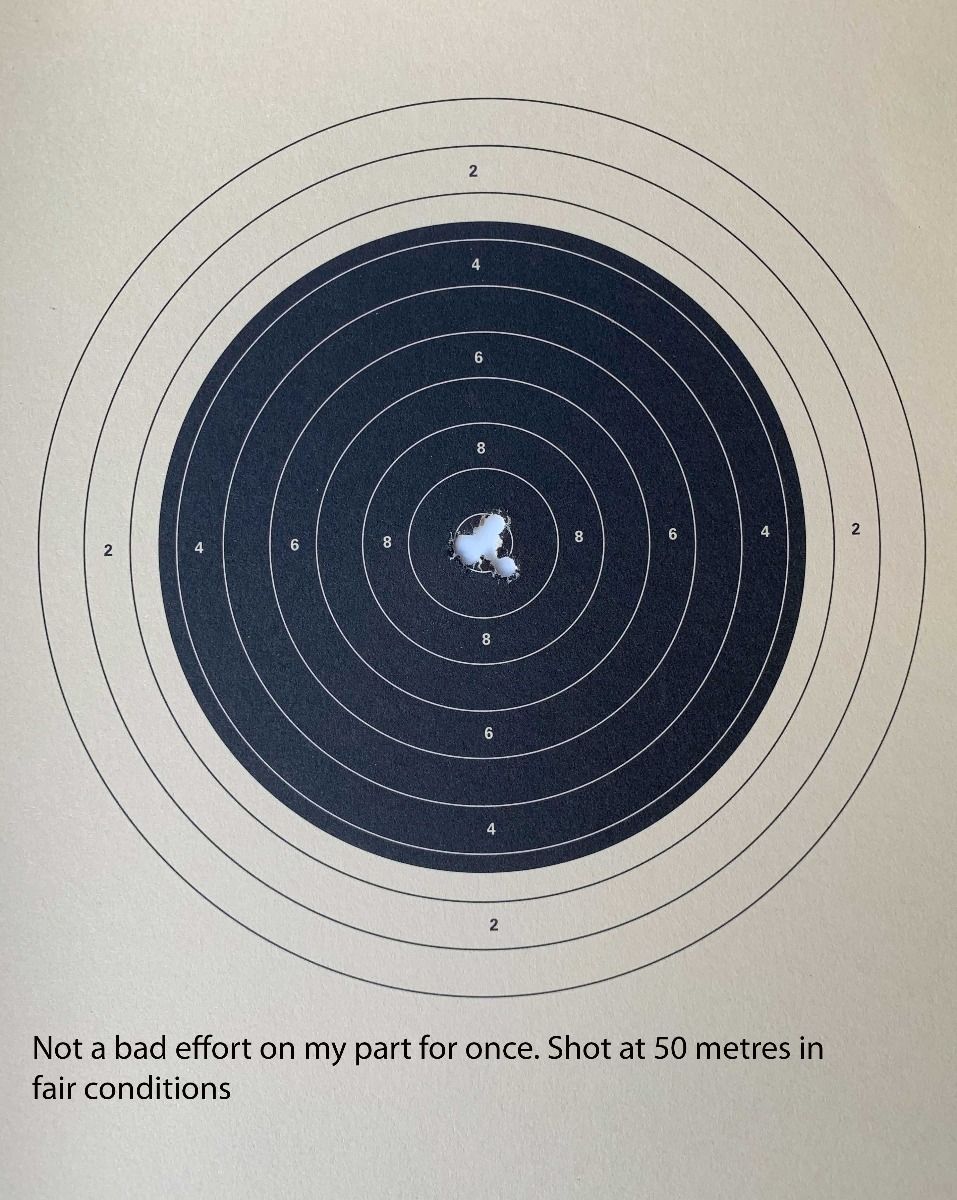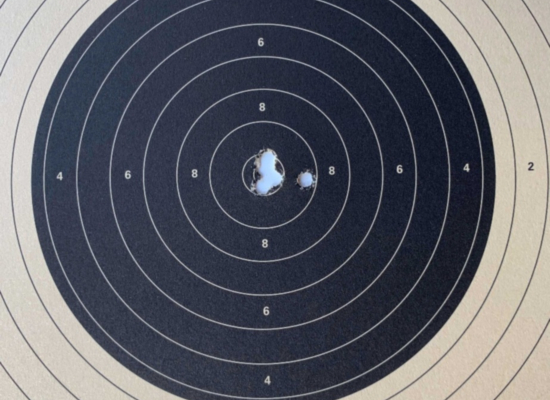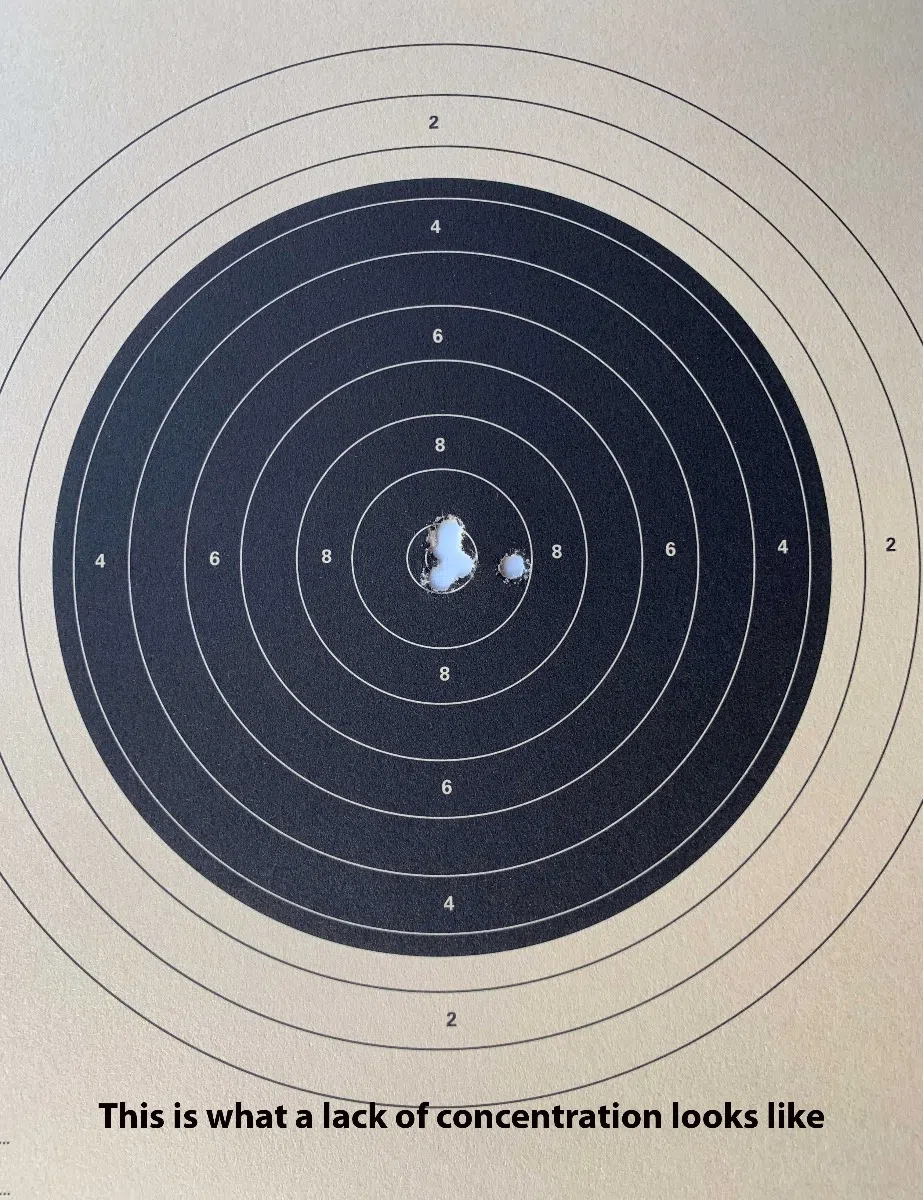Before we start let me tell you a little about me. Are you sitting comfortably? Yes? then i”ll begin.
I've been a member of my local club down in Torbay, Devon for around fifteen years. It's a small club but in my opinion it's friendly and well run.
Like most clubs the emphasis is on safety first leading on to competing or just shooting for fun.
Our main disciplines are LSR sport rifle, .22LR prone and 25yrd Bench Rest. We also shoot 10mtr air rifle and pistol.
Over the years I've had a go at most things but have settled on Bench Rest (NSRA rules). Plus I'm looking to return to 25yrd Prone now that my dodgy back has started to improve.
Please note: I don’t consider myself an expert at any discipline but I have over the years had the benefit of receiving help and guidance from some very competent and experienced shooters, some of which have had a fair amount of local and national success. Plus I have completed an instructors course in both air weapons and Bench Rest shooting. What follows are some of the tips and advice that have helped me to progress and get more out of my shooting and hopefully, there may be something that you pick up that might be of help for you.
ROUTINE
My personal theory is that its best to begin with a routine that you follow diligently to start with so that you always have a point of reference to go back to if you try something new and you find that it doesn’t work out.
There are dozens of different things to remember when you are starting out so i always advise people to begin with a few important basics and stick to those until you feel confident enough to move on.
POSITION
It's important that you are as comfortable as possible when shooting.
Comfortable clothing is advised but the correct position for you at the bench is essential. If you have an adjustable stool make sure it's set to a height that's right for you. Don’t just sit down on the last persons setting. It may seem obvious but you’d be surprised at how many people don’t take the time to alter height and position, everyone is different. A lot of people sit alongside the bench and some (like me) sit behind. Try it out and see which one you consider feels better for you. Try it for a while then you can change it if you decide it's not working for you. We are all different so pick where you want to be, remember the positions and make sure you set up that way every time.
Once in position Its time to set up your rifle. Make sure you follow all club safety procedures and that the rifle is unloaded at all times until you are ready to fire.
IMPORTANT!
When setting up your rifles sights its essential that you set the point of aim exactly at the centre of the target.
It's surprising how many shooters set their sights to just below the centre (I used to do that myself without realising it)
No no no!!!! centre only (i will be watching).
Once you have all your kit out, rest, (that's bench rest not a nap) glove (if you use one) ammunition and ear defenders etc and you are comfortable in your chosen position, then its time to align the rifle to the first target.
You should always ensure that your rest is as level as possible, some of them like the one I use (see photo) have a built-in spirit level which works quite well and is very convenient. These are available from Optics Warehouse and a good investment as a sturdy rest makes for better results. (who needs a wobbly rest?)
Always use a sighter first before commencing with competition or practice cards. A sighter is a spare target that you can use to have a small practice to make sure that your gun is set up and performing as you expect. I personally always fire at least five shots to make sure that your settings haven’t changed since the last time you used the gun and to settle you into the rhythm and warm the barrel up.
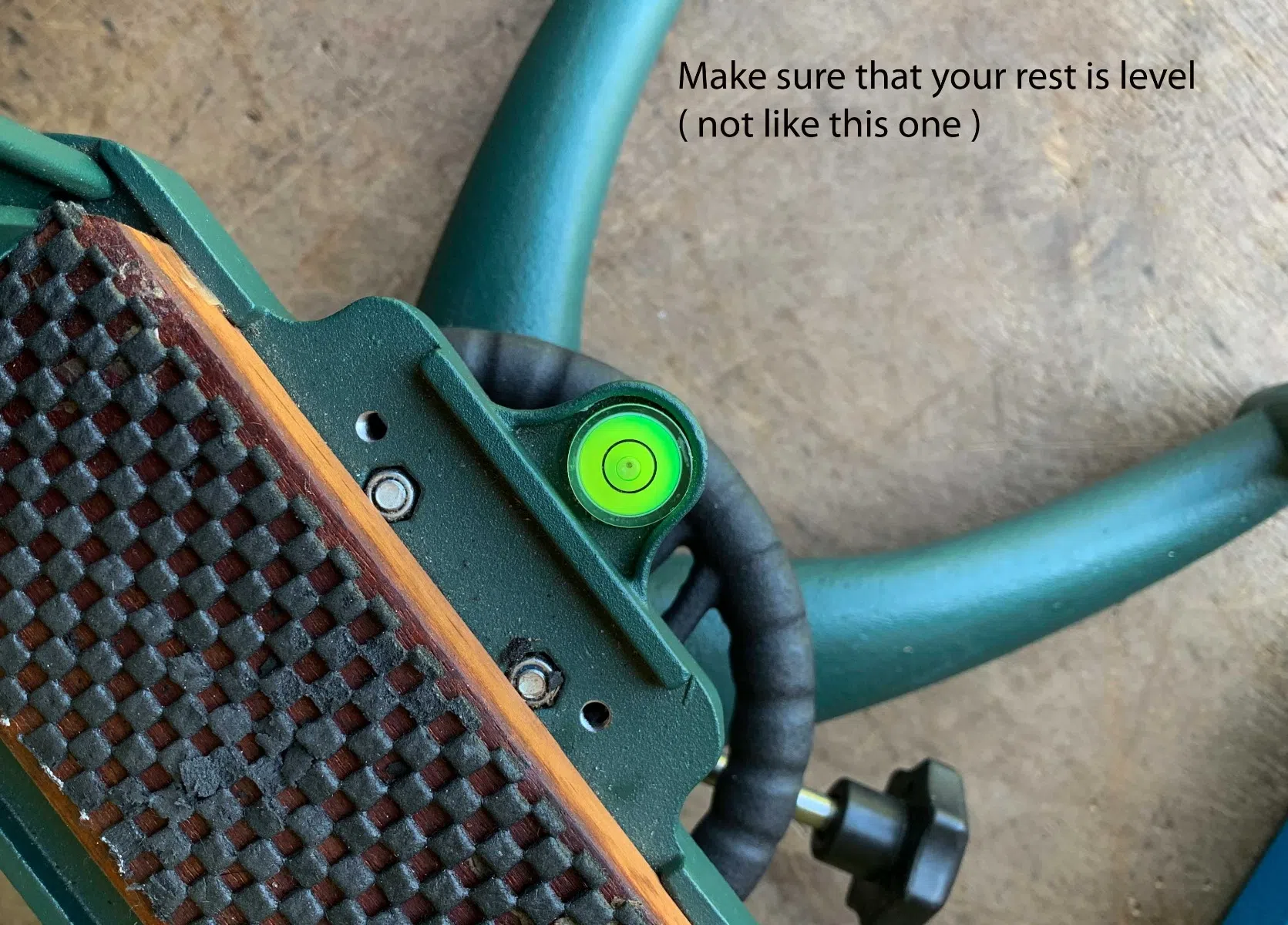
PREPARING TO SHOOT
Once you have everything ready its time to start shooting.
Before you begin try and calm yourself as much as possible.
This is not always easy when you are starting out. Anything new especially when being supervised or watched by others is made more difficult by the desire to impress and not look silly. Don't worry about that, this is the very time to make mistakes and look silly, nobody expects someone new to any activity to be good at it and if they tell you that they were then they’re probably telling porkie pies.
Try to lower your heart rate by deep breathing, calmness is important, good breath control and a slow steady pulse brings more accuracy (but remember to breathe occasionally, having to resuscitate you on the range is tiresome and eats into the time set aside for tea and a kit kat after shooting.)
When you are ready and your range officer gives the go-ahead, load your gun.
Keep your body clear of the bench as much as possible as you don’t want to transmit your heartbeat to the rifle.
When you are ready and told to begin by the range officer bring your rifle up on target keeping your finger clear of the trigger.
Make sure your rifle is properly aligned on the target so that when you release your grip it stays pretty much on the centre and doesn’t move to the left or right.
Adjust your position on to the next target, don’t just twist your body.
If you are shooting lower targets adjust the height of the rest accordingly rather than tip the rifle.
RELEASING THE SHOT
Trigger position is important.
Make sure you place the trigger in the centre of the first pad of your index finger. On the tip or too far in can cause the gun to move left or right.
Breathe deeply for a few breaths and when you are ready come up to your point of aim.
Take a final breath and release some of the air and when you feel happy you are on target squeeze the trigger and release the shot. Trigger hold (or follow-through) is very important! (See, bold letters again!)
Once you release the shot hold your position as if you are going to fire a second shot on the same target. Count to two (in your head its not a maths lesson) before moving on to the next one.
Try to release the shot in 6 to 10 seconds (some say 6 to 8 seconds). If you can’t then you need to repeat the cycle again.
Always take your time especially if its a competition. Don’t worry about holding others up (unless of course there's a time limit).
There are no prizes for first to finish.
When you’ve released the shot adjust your position on to the next target.
BILLY BASICS
Basics can be a bit dull and boring but they do provide a sound platform for progress.
Once you get to a place where you feel that you have leveled out you can try different techniques that if successful, you can adopt or if not you have a point of reference to return to for trying something else.
The hardest thing to do is discipline yourself to:
1. Always line rifle up and move your body position to next target.
2. Always start again if you can’t let the shot go within the 6 to 10-second time frame.
I still struggle with number 2. but the main thing is to keep safe and enjoy your shooting……
[WORDS: Frank Pearman]







